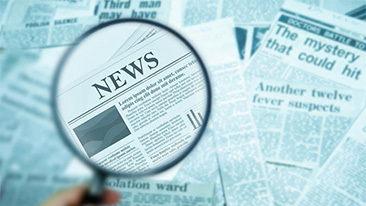Is there any way to repair the laser level?
Release Time:
Mar 23,2020
The horizontal wire of the cross wire should be perpendicular to the rotation axis of the instrument (secondary condition). Note: The second condition is generally guaranteed by the manufacturer.
Laser level maintenance method one:
Conditions to be met by laser level and inspection of laser level.
1. The level axis of the level tube should be parallel to the collimation axis of the collimator of the telescope (main conditions)
2. The collimation axis of the telescope does not change position due to focusing (main conditions).
3.The circular level axis should be parallel to the rotation axis of the laser level (minor condition).
4. The horizontal wire of the cross wire should be perpendicular to the rotation axis of the instrument (secondary condition). Note: The second condition is generally guaranteed by the manufacturer.
For ordinary level 3 and 4 level measurements in the country, items 1 and 3 and 4 should be checked frequently. For the precision laser level of national first- and second-level measurement, the second item should be checked regularly. The principle of inspection and calibration sequence: the previous inspection items are not affected by the later inspection items. Inspection method: The level axis of the circular level should be inspected and corrected equally with the rotating axis of the instrument.
Inspection: First center the circular level bubble with the foot screw, then rotate the instrument 180 degrees. If the bubble is still centered, this condition is met. If the bubbles drift, the conditions are not met. Calibration: Calibration is performed using a calibration screw mounted under a circular bubble. It usually has only three. During operation, according to the method of leveling the circle, move the three correction screws to center the bubble and move it to the center position by half the length. If the operation is completely accurate, after calibration, the level axis is parallel to the instrument rotation axis. If the instrument is leveled at this time, the rotation axis of the instrument is in a straight state. However, in practice, multiple adjustments are required to complete it.
Erbium laser level maintenance method two:
Cross wire, cross wire should be inspected and calibrated perpendicular to the axis of rotation of the instrument
Test: First aim at a point with one end of the cross wire and then slowly rotate the telescope with a micro-motion spiral to observe the movement track of this point in the field of view. If this point can always be moved on the horizontal wire, it means that the horizontal wire of the cross wire is perpendicular to the axis of rotation of the instrument. If this point is away from the horizontal wire, it means that the horizontal wire is not perpendicular to the rotation of the instrument. Correction is required.
Correction: Use the correction screw to fix the crosshair ring. First loosen the correction screw to make the entire crosshair ring rotate. Make the horizontal wire coincide or parallel with the horizontal line. After calibration, check again until it meets the requirements. Telescoping
Laser level maintenance method three:
Inspection and correction should be parallel to the level axis of the level
Note: The telescope collimation axis and the horizontal tube level axis are both spatial straight lines. If they are parallel to each other, both the projection on the rigid plane and the projection on the horizontal plane should be parallel. This is the i-angle test, and the test of whether the projections on the horizontal plane are parallel is the cross error test. Test i angle
Inspection method: Select two points A and B with proper distance in a relatively flat place, and nail them into the ground with a wooden stake, or use a ruler pad instead. Place the laser level between the two points A and B so that the distance between the two ends is strictly equal. At this time, the correct height difference Hab is measured, and then place the laser level near any of the two points (such as near point B) At this time, due to the unequal distance, the measured height difference Hab 'will have the effect of the angle i. That is, δhab = Hab'-Hab, and use the formula: x = δab / (Sa-Sb) * Sa to calculate the adjustment value.
Keywords:





